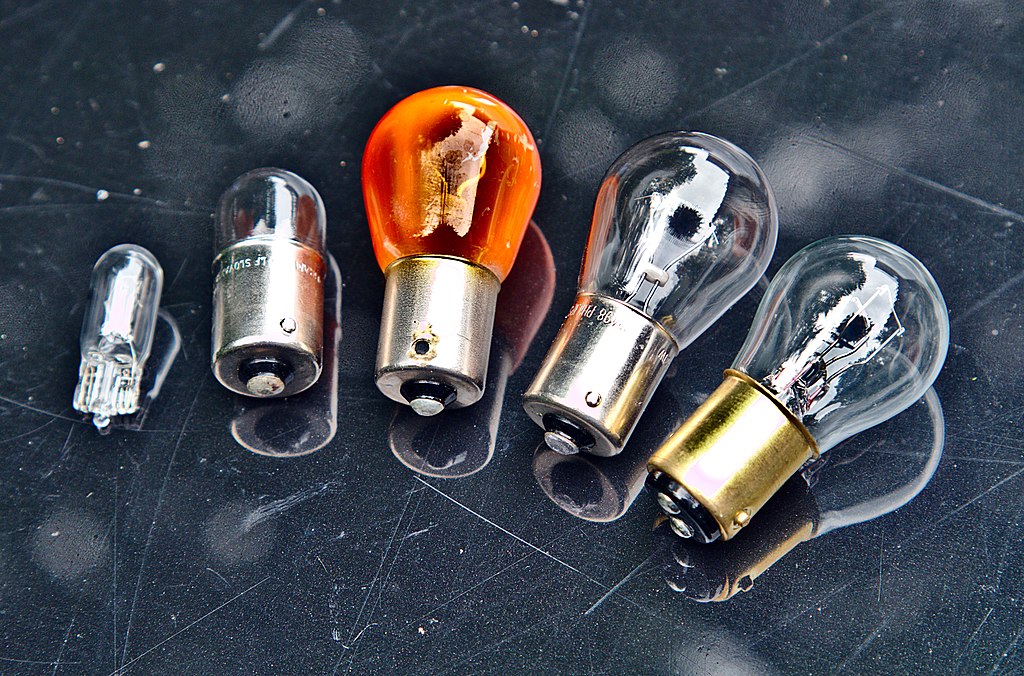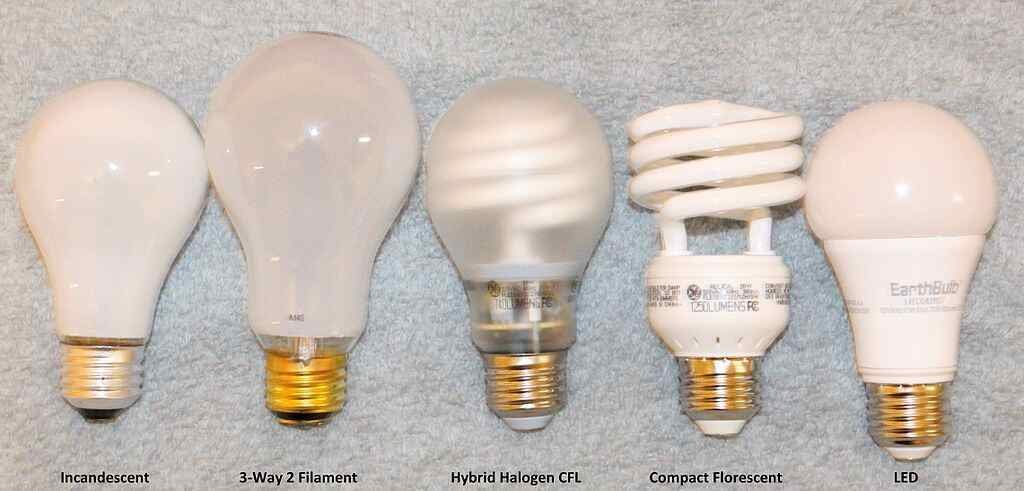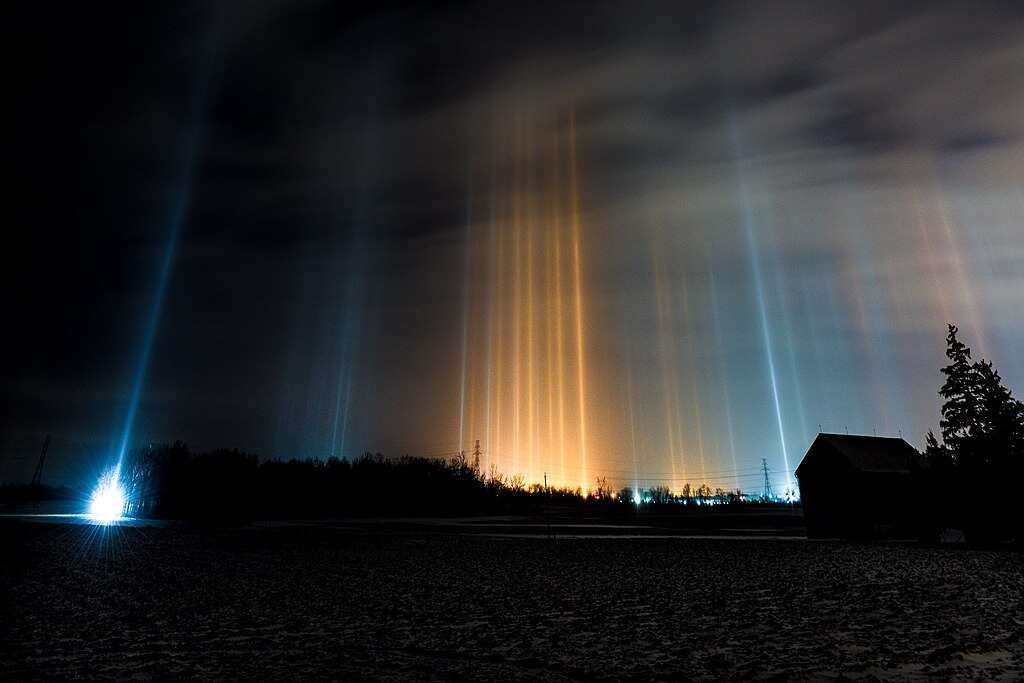Comparison of the different types of bulbs: incandescent, compact fluorescent (low consumption), halogen, LED
It is obvious that incandescent and halogen bulbs are obsolete given the lifespan and power consumption of other bulbs. Here is the comparison light bulbs that you should you. LEDs are increasingly competing with compact fluorescent bulbs, although it is probably better to choose a good quality compact fluorescent bulb, rather than a low-end LED bulb. The comparison of the technical criteria is sometimes laborious to compare 2 bulbs. It is, however, an essential step to equip yourself with a coherent light bulb that is not dangerous to health, especially when the lifespan of the products is counted in decades.
 Comfreak (Jonny Lindner), CC0, via Wikimedia Commons
Comfreak (Jonny Lindner), CC0, via Wikimedia Commons
Choose the right bulb?
Limit lighting needs. To save money on lighting, the first step is precisely to avoid lighting as much as possible. To do this, you must first think carefully about your house by optimizing solar gain (which also limits heating consumption), thanks to a bioclimatic design. A good exposure of the house and an unobstructed view can indeed bring you more brightness. Pay attention, for example, to the growth of trees which risk creating shade in the medium term. In addition, rooms with light colors and not overloaded with furniture avoid unnecessary lighting.
Also be sure to choose your lampshades carefully, the lighter they are, the more they will reflect the light and increase the brightness accordingly. Remember to dust them regularly, just like the bulbs themselves.
Start from its need in lumens
To choose the most suitable bulb, you need to know your need in Lumens (lm) and not in Watts. Lumens represent the illumination that the bulb will produce. For this, a quick calculation is in order:
If you replace an incandescent bulb, multiply its electrical power by 12. For example, a 60w bulb corresponds to 60 * 12 = 720 lumens.
If you replace a halogen bulb, multiply its electrical power by 20. For example, a 35w bulb corresponds to 35 * 20 = 700 lumens.
If you replace a compact fluorescent bulb, multiply its electrical power by 60. For example, a 12w bulb corresponds to 12 * 60 = 720 lumens.
These values of 12, 20 and 60 represent the light output (lm/W). The higher it is, the better since the bulb will produce more light for less electricity consumption. LEDs are the bulbs with the highest light output, it is generally between 80 and 95 lm/W.
With a production of lumens sufficient to illuminate the desired room, we will therefore rather choose the bulb that consumes the least Watt. To get an idea, a difference of 1 watt, for 730 hours (2 hours/day) represents an additional cost of 10 euro cents over a year.
Color and CRI (Color Rendering Index)
The “color temperature” defines the general hue that the bulb will have. Thus, a temperature of 2700K will be slightly yellow, a 3000K a little whiter, while 6000K will be frankly white. Daylight is around 6,400K.
Remember that if you want to create a “warm” atmosphere (living room, living room, etc.), you have to go for a low temperature (2,700K). Conversely, for lighting that promotes precision (kitchen, office), it is necessary to approach natural light with high temperatures (4,000-6,400K).
The color rendering index (CRI) indicates whether the color will be more or less natural. The closer the CRI is to 1, the closer the colors will approximate daylight colors. Generally, the CRI is greater than 80, but without further details.
Lifetime
It varies from 1000h to 50,000h depending on the bulbs. Be careful however, the general lifespan of bulbs and in particular of LEDs is very dependent on their temperature. This can vary in important proportions (but unknown in fact), between laboratory tests and daily use. Better to leave today for a maximum of 25,000 hours, including when 50,000 hours are announced.
The lifespan also depends on the number of switching on/off the bulb can withstand. Again, this is difficult to estimate and verify. Overall, bulbs of the same type have the same on and off resistance.
Ignition duration
The duration of ignition concerns in particular compact fluorescent bulbs. Those of poor quality take up to more than a minute to light up completely. This can be disturbing, especially in rooms where occupancy is a few minutes.
Conventional incandescent bulbs
Operation of a conventional incandescent bulb
A tungsten filament is heated to a very high temperature (around 2500°C or 4532°F). The filament will thus radiate in the visible spectrum of the human eye and therefore emit light (to our eyes). The disadvantage of this technique is that this temperature will cause the sublimation (passes from the solid state to the vapor state) of the tungsten, thus reducing the thickness of the filament and its lifespan. The vapor produced will also settle on the walls of the bulb and thus opacify it, which will reduce its luminous efficiency.
In addition, the temperature inevitably induces heat loss. It is thus estimated that 5% of the energy absorbed by the bulb is returned in light, the rest being in heat. This defect can be slightly nuanced by the fact that the bulbs are rather used during the heating period and that part of the energy is therefore used for the “heating” of the room.

A 230-volt incandescent light bulb with a medium-sized E27 (Edison 27 mm) male screw base. The filament is visible as the mostly horizontal line between the vertical supply wires. KMJ, alpha masking by Edokter, CC BY-SA 3.0, via Wikimedia Commons
Planned obsolescence
Subject very discussed at the present time, the planned obsolescence exists on the majority of the electric apparatuses. It consists of intentionally limiting the lifespan of a device so that the consumer buys it more often. Applied to incandescent bulbs, planned obsolescence induces a very low lifespan (about 1000 hours), but which does not seem to be devastating to the consumer. Indeed, by reducing the voltage, we certainly increase the life of the bulb. But it is then necessary to increase the power and therefore the energy consumption to have the same quantity of light. 1000h is therefore a compromise between the cost of renewal and the cost of electricity consumption.
Bulbs withdrawn from sale
The European Union has set a gradual abandonment of conventional incandescent bulbs. It started in 2009 with the most powerful bulbs (100W) and ended at the end of 2012 for the 25W.
It should be noted that the EU is not the only one to have taken this step since the United States and Canada have also implemented it.
Advantages of conventional incandescent lamps
Low price
No health risk (no mercury, etc.)
Instant ignition
Can be disposed of with household waste
Good color rendering
Disadvantages of conventional incandescent lamps
Very limited lifespan (1000h)
Low output light output (10 to 15 lm/W)
The luminous efficiency decreases significantly over time
Risk of burns due to the heat of the bulb
Do not support repeated on/off cycles
Incandescent halogen bulbs
How halogen bulbs work
As in a conventional incandescent bulb, it is a tungsten filament which is heated to high temperature to radiate in the visible and produce light. However, the halogen gases (typically iodine or bromide) contained in the bulb will prevent the sublimation of the filament, which will significantly increase the lifespan (about twice as long as that of a conventional incandescent lamp). Moreover, by avoiding sublimation, there will be no (or less and less rapid) tungsten vapors which will deposit on the walls.
Bad reputation of halogen bulbs
Halogen bulbs have a reputation for being very energy consuming. This is less and less true because halogen technology is evolving (appearance of new gases used, etc.) and today there are high-performance halogen lamps (and therefore still authorized for sale). However, halogen tubes are always to be avoided. Indeed, they are often very powerful (more than 100W) and only serve as indirect lighting.
Advantages of incandescent halogen lamps
No health risk
Can be disposed of with household waste
Instant ignition
Light output 30% higher than that of a conventional bulb: a 70W halogen bulb illuminates as much as a conventional 100W incandescent
Good color rendering
Disadvantages of incandescent halogen lamps
Limited lifetime (2000h)
Risk of burns due to bulb temperature
Do not support repeated on/off cycles

Five assorted light bulbs used on a 1987-built Oldsmobile Toronado Troféo. From left to right: Halogen bulb (courtesy light), clear low-profile incandescent lamp, orange incandescent lamp (sidemarker), clear standard-size incandescent lamp (trunk illumination), clear two-filament incandescent lamp (front turn flasher / parking light). Jacek Rużyczka, CC BY-SA 4.0, via Wikimedia Commons
Compact fluorescent bulbs – low consumption
Compact fluorescent bulbs – fluorescent and compact – work on the same principle as a fluorescent tube also called “fluorescent” or “neon tube”, it is indeed a fluorescent tube which is folded back on itself. These bulbs are now capturing everyone’s attention, both for their good lighting capacities and their “low consumption”, but also for the controversies and presumed health risks that accompany them: mercury pollution, production of a magnetic field, etc.

Compact fluorescent lamp. Comparison of CFLs with power ratings of 105 W, 36 W, and 11 W. Tobias Maier, CC BY-SA 3.0, via Wikimedia Commons
Functioning
An electronic ballast (electronic component which acts on the electrical current) causes a significant electrical discharge. This will then ionize (create a magnetic field) the gases contained in the bulb (argon and mercury vapor at low pressure). This will then create ultraviolet radiation, therefore invisible to the naked eye. The fluorescent dust on the surface of the bulb (beryllium powder) will then convert this ultraviolet radiation into visible radiation (light).
The risk of mercury poisoning
Compact fluorescent bulbs contain mercury vapor, 1 to 25mg (20 to 30mg in fluorescent tubes). Mercury is not dangerous inside the bulb. However, in case of breakage, some precautions must be taken.
Avoid breathing mercury vapor (block breathing)
Ventilate the room for 10 to 15 minutes
Wear gloves to avoid cutting yourself with breakage
Do not vacuum breakage
Electromagnetic waves
Various reports have proven that compact fluorescent bulbs produce a significant amount of electromagnetic waves, but at short distances (<30cm or <12 inch). It is therefore recommended to be more than 1m from the bulb, which means that you should avoid putting compact fluorescent bulbs in bedside or desk lamps in particular. Read also: Radiation | Classification and Type: Electromagnetic, Ionizing and Non-ionizing, Particle
UV radiation
Some anti-compact fluorescent bulbs invoke the fact that these bulbs produce UV rays, which are dangerous for health (skin cancer) and for vision (AMD: Age-Related Macular Degeneration), especially for children (retina not yet yellowed). However, the role of fluorescent powder is precisely to transform the UV rays produced by the ionization of gases into visible light. UV rays are therefore absorbed almost entirely and the health risk due to UV radiation is almost non-existent.
Advantages of compact fluorescent bulbs
The price is relatively reasonable compared to the performance. However, some retailers, especially supermarkets, display exorbitant prices for very average performance. Many online specialty stores display more competitive prices, often with better documentation.
Fairly high lifespan (8000h on average).
High light output 70 lm/W or 5 times more than that of an incandescent bulb.
Disadvantages of compact fluorescent bulbs
Color rendering worse than incandescent bulbs
Heating time varying from a few seconds to a few minutes (especially on older models)
Risks of mercury poisoning (if the bulb breaks)
Should be reprocessed and not thrown in the normal trash (mercury and beryllium are both toxic)
Do not support repeated on/off cycles
Production of electromagnetic waves, therefore not suitable for use close to the user (desk lamp, bedside lamp, etc.)
Risk of burns due to bulb temperature.
LEDs
LED operation
LEDs have multiple applications and are therefore present in the majority of electronic equipment. The operation is always the same but remains quite complex. It is in fact when electrons move between two semiconductors that light will be emitted (depending on the type of conductor). The principle is also very close to the operation of a photovoltaic panel (inverted).
A very relative lifespan
Generally, Asian lamp manufacturers buy ready-made power supplies and mount the LED system and the bulb. The power supply has a lifespan of 50,000 hours at 25°C (77°F) as specified in the tests, the LEDs too. Except that once put in the bulb, it no longer works at 25°C (77°F) with air convection all around…. It is encapsulated in the body of the lamp which is heated by the LEDs. The power supply therefore operates at 65, 75, 85°C (149, 167, 185 °F) or even more depending on the quality of the product.
One of the first elements that breaks is the chemical capacitor. If at 25°C (77°F) it works well 50,000h, at 35°C (95 °F) it is only 25,000h, at 45°C (113 °F) 12,500h and at 55°C (131 °F) 6,750h… We divide the lifespan by 2 each time increase the operating temperature by 10°C (50 °F).

A selection of commercially available LED lamps (“light bulbs”) with Edison (screw-type) base/ Photo by Geoffrey A. Landis. Geoffrey.landis at English Wikipedia, CC BY 3.0, via Wikimedia Commons
Risks for vision
The main health risk that LED technology can cause is on vision. Thus, only bulbs that do not show the visible LEDs should be used. Indeed, some LEDs produce a slightly bluish light, which can aggravate AMD (Age-Related Macular Degeneration) as well as induce vision problems for young children if exposure is prolonged.
It is therefore necessary to equip yourself with an LED bulb with “small yellow squares”, which transforms all the bluish light into a non-hazardous color.
Be careful, lighting that is too powerful or too concentrated will also cause glare, which can cause visual fatigue.
Advantages of LEDs
Very long life
Very good light output (about 6 times higher than that of a conventional incandescent lamp)
Good resistance to “on/off” cycles
No risk of pollution
Bulb temperature without risk of burns
Disadvantages of LEDs
Price often higher than other bulbs, but significantly reduced
Risks of aggravation of possible AMD (Age-related Macular Degeneration) for unprotected bulbs (blue light)
Conclusion
It is obvious that incandescent and halogen bulbs are obsolete given the lifespan and power consumption of other bulbs. LEDs (see our various tests) are increasingly competing with compact fluorescent bulbs, even if it is probably better to choose a good quality compact fluorescent bulb, rather than a low-end LED bulb. The comparison of the technical criteria is sometimes laborious to compare 2 bulbs. It is, however, an essential step to equip yourself with a coherent light bulb that is not dangerous to health, especially when the lifespan of the products is counted in decades. If the choice of efficient lighting helps to reduce its consumption, there are also many simple actions that can significantly reduce your electricity bill.
Smart choice
However, it is an important step to equip yourself with a coherent light bulb (light emitted by normal means) that is not harmful to health, especially if the product life is calculated in decades. If efficient lighting choices help reduce their consumption, there are also many simple actions that can significantly reduce your electricity bill.
Real lifespans
There are Asian products with real lifespans often close to 6,000-8,000h (i.e. identical to that of compact fluorescents) and not 50,000h! Branded LEDs (Philips, Osram, Samsung, etc.) are often better studied and in particular evacuate heat better. Their lifespan is therefore generally better. But to be sure, you would have to test them for 5,000, 10,000 or 50,000 hours…
Tips
if you have the opportunity to test the LEDs before buying, those that are less hot “to the touch” will probably be the best. During the tests that we carried out on several qualities of LED, the temperatures ranged from 30 to 43°C or 86 to 109 °F (on the part of the base where the sensitive electronic components are located).
Different Types Cooktops Electric | Induction, Vitroceramic or Mix
Sources: PinterPandai, The Lightbulb Co. UK., Eartheasy
Photo credit (main picture): Mark Jurrens (CC BY-SA 4.0) via Wikimedia Commons
Main photo descripion: Incandescent: 60 Watts 3-way lamp variable: 50-100-150 Watts Hybrid Halogen/CFL: 84 watts then 27.6 Watts(GE says 15 Watts but 230 milliamps at 120 volts is 27.6 watts). These use electronics that burn both bulbs and then determine when the CFL part is bright enough and then turn of the encased halogen bulb. Compact fluorescent bulb(CFL): 29 Watts Light Emitting Diode(LED): 9 Watts.



